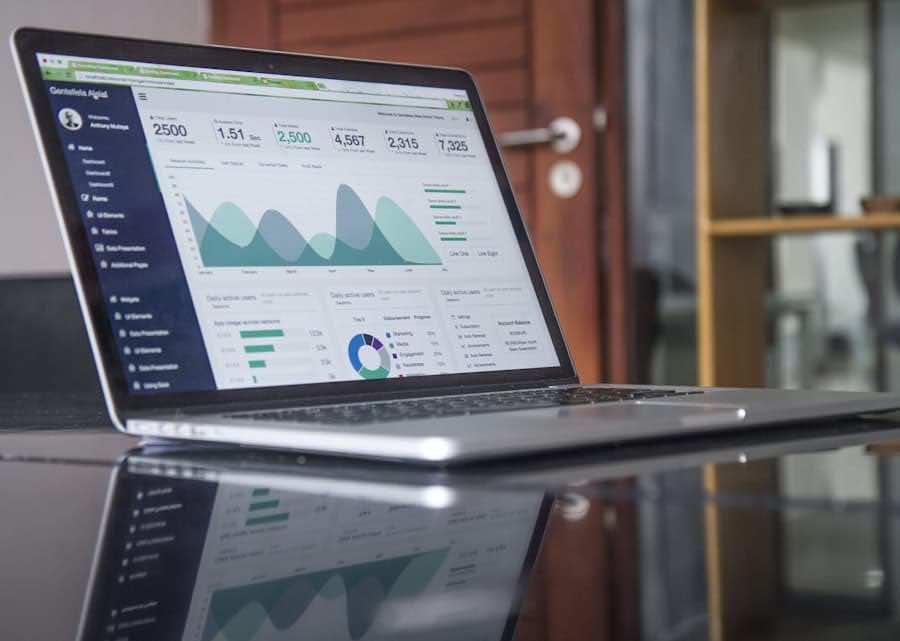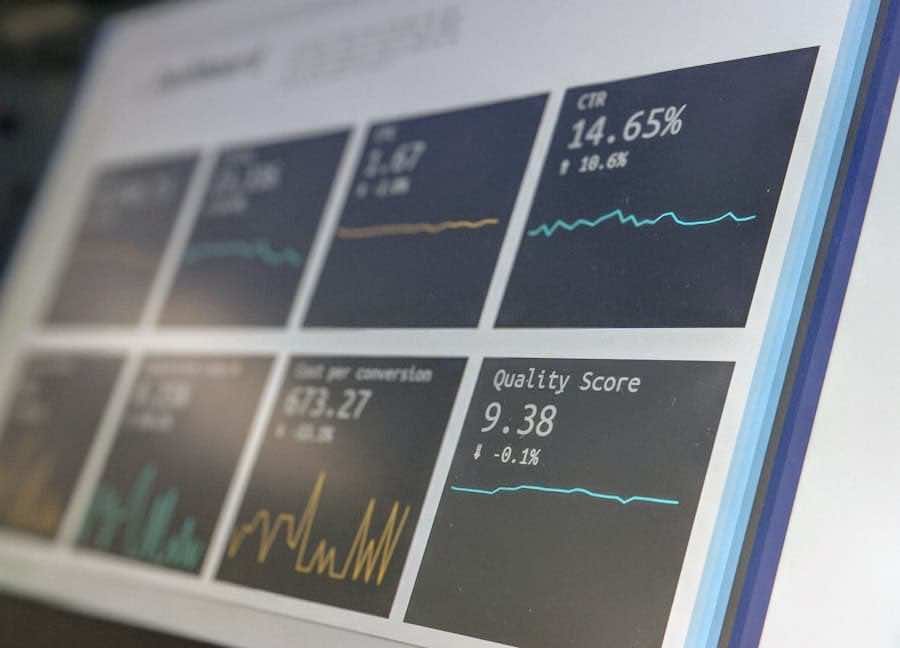The rise of remote work has transformed the landscape of modern employment, necessitating a shift in how productivity is measured and managed. As organisations increasingly adopt flexible work arrangements, the need for robust analytics to assess employee performance and productivity has become paramount. Remote work productivity analytics refers to the systematic collection and analysis of data related to employee output, engagement, and overall effectiveness while working outside traditional office environments.
This analytical approach not only aids in understanding individual and team performance but also provides insights that can drive strategic decision-making within organisations. In this new paradigm, where employees may be scattered across various locations, the challenge lies in accurately gauging productivity without the physical oversight that an office environment typically affords. Remote work productivity analytics leverages technology to track various performance indicators, enabling managers to maintain oversight and support their teams effectively.
By employing these analytics, organisations can identify trends, optimise workflows, and ultimately enhance overall productivity, ensuring that remote work does not compromise performance standards.
Summary
- Remote work productivity analytics is the measurement and analysis of employee performance and output in a remote work setting.
- Remote work productivity analytics is important for businesses to understand how their remote teams are performing and to identify areas for improvement.
- Remote work productivity analytics works by tracking and analysing key metrics such as time spent on tasks, completed projects, and communication patterns.
- Key metrics for remote work productivity analytics include task completion rates, time management, and collaboration effectiveness.
- Tools and software for remote work productivity analytics include time tracking software, project management tools, and communication platforms.
The Importance of Remote Work Productivity Analytics
The significance of remote work productivity analytics cannot be overstated in today’s business environment. As companies navigate the complexities of a distributed workforce, understanding how employees perform in a remote setting is crucial for maintaining operational efficiency. Analytics provide a framework for evaluating productivity levels, allowing organisations to pinpoint areas where employees excel or struggle.
This insight is invaluable for tailoring support and resources to meet the specific needs of remote workers, fostering an environment where they can thrive. Moreover, remote work productivity analytics plays a critical role in employee engagement and satisfaction. By utilising data to understand how employees are managing their workloads, organisations can implement strategies that promote a healthy work-life balance.
For instance, if analytics reveal that employees are consistently working overtime or experiencing burnout, management can take proactive measures to redistribute tasks or encourage breaks. This not only enhances employee well-being but also contributes to higher retention rates and a more committed workforce.
How Remote Work Productivity Analytics Works

Remote work productivity analytics operates through a combination of data collection methods and analytical tools designed to measure various aspects of employee performance. At its core, this process involves gathering quantitative and qualitative data from multiple sources, including project management software, communication platforms, and time-tracking applications. These tools capture essential metrics such as hours worked, task completion rates, and collaboration frequency, providing a comprehensive view of an employee’s contributions.
Once data is collected, it undergoes analysis to extract meaningful insights. Advanced analytics techniques, including machine learning algorithms and data visualisation tools, can identify patterns and trends that may not be immediately apparent. For example, an organisation might discover that certain teams are more productive during specific hours or that particular tasks consistently take longer than expected.
By interpreting these findings, managers can make informed decisions about resource allocation, team dynamics, and workflow optimisation.
Key Metrics for Remote Work Productivity Analytics
To effectively measure productivity in a remote work setting, organisations must focus on several key metrics that provide a holistic view of employee performance. One of the most fundamental metrics is task completion rate, which tracks the number of tasks completed within a given timeframe. This metric helps managers assess whether employees are meeting deadlines and achieving their objectives.
Another critical metric is engagement level, which can be gauged through various means such as participation in meetings, responsiveness to communications, and collaboration on projects. High engagement levels often correlate with increased productivity, making it essential for organisations to monitor this aspect closely. Additionally, time spent on specific tasks can provide insights into efficiency; if employees are spending excessive time on low-priority tasks, it may indicate a need for better prioritisation or resource allocation.
Furthermore, qualitative metrics such as employee feedback and satisfaction surveys can complement quantitative data by offering insights into the employee experience. Understanding how remote workers feel about their workload and the support they receive can inform strategies for improvement and foster a more positive work environment.
Tools and Software for Remote Work Productivity Analytics
A plethora of tools and software solutions are available to facilitate remote work productivity analytics, each offering unique features tailored to different organisational needs. Project management platforms like Asana and Trello allow teams to track progress on tasks and projects in real-time. These tools often include features for assigning tasks, setting deadlines, and monitoring completion rates, making them invaluable for assessing productivity.
Time-tracking applications such as Toggl and Clockify provide insights into how employees allocate their time across various tasks. By analysing this data, managers can identify inefficiencies or areas where employees may require additional support. Communication tools like Slack or Microsoft Teams also play a role in productivity analytics by enabling managers to monitor engagement levels through message frequency and collaboration on shared documents.
Moreover, more advanced solutions like Microsoft Power BI or Tableau offer robust data visualisation capabilities that allow organisations to create custom dashboards for tracking productivity metrics. These tools enable decision-makers to view data in an easily digestible format, facilitating quicker insights and more informed decision-making.
Best Practices for Implementing Remote Work Productivity Analytics

Implementing remote work productivity analytics requires careful planning and consideration to ensure its effectiveness. One best practice is to establish clear objectives for what the organisation hopes to achieve through analytics. This could involve improving task completion rates, enhancing employee engagement, or identifying training needs.
By setting specific goals, organisations can tailor their analytics approach to meet these objectives effectively. Another important practice is to ensure transparency with employees regarding how their data will be used. Open communication about the purpose of productivity analytics fosters trust and encourages employees to engage with the process positively.
It is essential for organisations to emphasise that the goal is not punitive but rather aimed at supporting employees in their roles. Additionally, organisations should regularly review and adjust their metrics based on evolving business needs and employee feedback. The dynamic nature of remote work means that what works today may not be effective tomorrow; therefore, continuous evaluation is crucial for maintaining relevance in productivity assessments.
Challenges and Limitations of Remote Work Productivity Analytics
Despite its advantages, remote work productivity analytics is not without challenges and limitations. One significant concern is the potential for over-surveillance or micromanagement. When organisations rely heavily on tracking tools without considering employee autonomy, it can lead to feelings of distrust and resentment among staff.
Striking a balance between monitoring performance and allowing employees the freedom to manage their own time is essential for maintaining morale. Another challenge lies in the interpretation of data. Metrics can sometimes be misleading if taken out of context; for instance, an employee may have a low task completion rate due to external factors such as personal issues or inadequate resources rather than a lack of effort or capability.
Therefore, it is crucial for managers to consider qualitative factors alongside quantitative data when assessing performance. Moreover, there is the risk of data overload; with numerous metrics available for analysis, organisations may struggle to focus on what truly matters. Prioritising key performance indicators that align with organisational goals is vital to avoid confusion and ensure that analytics efforts yield actionable insights.
The Future of Remote Work Productivity Analytics
As remote work continues to evolve, so too will the landscape of productivity analytics. The future promises advancements in technology that will enhance the accuracy and depth of analytics capabilities. Artificial intelligence (AI) and machine learning are poised to play significant roles in this evolution by enabling predictive analytics that can forecast trends based on historical data.
This could allow organisations to proactively address potential issues before they escalate. Additionally, as remote work becomes more entrenched in corporate culture, there will likely be an increased emphasis on employee well-being as part of productivity assessments. Future analytics may incorporate mental health metrics alongside traditional performance indicators to provide a more comprehensive view of employee effectiveness.
Furthermore, as organisations become more adept at using data-driven insights to inform decision-making, there will be a greater focus on creating personalised experiences for remote workers. Tailoring support based on individual performance metrics could lead to enhanced job satisfaction and improved outcomes across teams. In conclusion, remote work productivity analytics represents a critical component of modern workforce management.
By leveraging technology and data-driven insights, organisations can navigate the complexities of remote work while fostering an environment conducive to high performance and employee satisfaction. As this field continues to develop, it will undoubtedly shape the future of work in profound ways.
Remote work productivity analytics is crucial for businesses to monitor and improve the efficiency of their remote workforce. By analysing data on employee performance, companies can identify areas for improvement and implement strategies to boost productivity. In a related article on technologies to make the environment green, the importance of using innovative technologies to create a sustainable workplace is highlighted. Just as businesses are investing in green technologies to reduce their environmental impact, they can also invest in remote work productivity analytics to enhance their operational efficiency.
FAQs
What is remote work productivity analytics?
Remote work productivity analytics refers to the process of measuring and analyzing the productivity of employees who work remotely. This involves tracking and evaluating various metrics such as time spent on tasks, output quality, and overall efficiency.
Why is remote work productivity analytics important?
Remote work productivity analytics is important because it allows organizations to understand how their remote employees are performing and identify areas for improvement. It also helps in ensuring that remote workers are staying on track and meeting their targets.
What are the key metrics used in remote work productivity analytics?
Key metrics used in remote work productivity analytics include time spent on tasks, completion rates, output quality, adherence to deadlines, and overall efficiency. These metrics help in assessing the performance of remote employees and identifying any potential issues.
How is remote work productivity analytics measured?
Remote work productivity analytics is measured using various tools and software that track and analyze the activities of remote employees. These tools can capture data on time spent on tasks, project progress, and communication patterns, which are then used to generate insights into productivity levels.
What are the benefits of remote work productivity analytics?
The benefits of remote work productivity analytics include improved performance management, better resource allocation, enhanced accountability, and the ability to identify and address any productivity challenges faced by remote workers. It also helps in fostering a culture of transparency and trust within remote teams.
